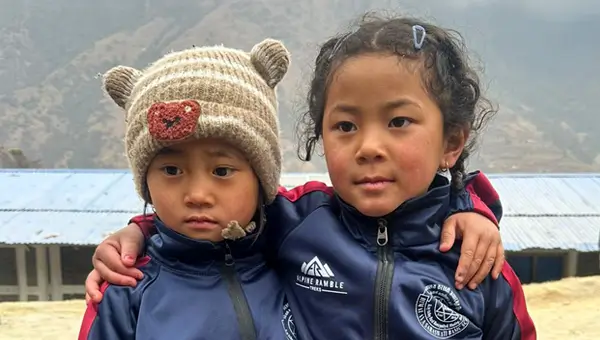A trek to Everest base camp is more than just a trek; you will have an amazing trip full of different experiences.
Jiri to Everest Base Camp Trek Highlights
- Hike through the most awesome land of the Himalayas
- Follow the footprints of legendary Sir Edmund Hillary and Tenzing Norgay Sherpa
- Enjoy the authentic local foods and local lifestyle from the very beginning of your trek
- Discover the whole valley of the Everest region, spending at the pastures, yak farms, and glaciers
- Enjoy the sunset and sunrise views of the Himalayas every day
- Hike to Kalapathar, the highest point of the trek
- Reach EBC, be thankful to yourself, and enjoy every moment of your achievement.
- Explore the local lifestyle, foods, and traditions.
- Visit ancient monasteries, museums, and art galleries during the trek to the local villages.
Skip a scary flight to and from Lukla for your Everest Base camp trek in Nepal. The trek from Jiri to Everest Base Camp begins at Kinja via Jiri, taking a local jeep or bus transport from Kathmandu.
This trek is set up for great preparation for acclimatization before you reach a high altitude of 5545 meters. This trek is a relatively easy trek on the downhills and a bit challenging at the higher elevation in terms of the altitudes.
To complete the journey, you need to be prepared to walk at least 4-5 hours a day.
The trail takes us from the beautiful low lands to high alpine terrain through breathtaking scenery. It's impossible not to think about the mountaineers of old who forged not only the way up Everest but the trekking trails which are now world-famous.
Outline itinerary for Jiri to Everest Base Camp Trek.
Day 1: Kathmandu - Kinja (1646m)via Jiri, Shivalaya, and Bhandar (2040m) by local bus or jeep
Day 2: Trek from Kinja - Junbesi (2675m)
Day 3: Trek from Junbesi - Namche Bazar (3440m)
Day 4: Acclimatization at Namche Bazaar (3440m)
Day 5: Trek from Namche Bazar to Tengbuche Monastry (3910m)
Day 6: Trek from Tengbuche Monastery to Dingboche (4460m)
Day 7: Acclimatization at Dingboche (4460m)
Day 8: Trek from Dingboche to Lobuche (4940m)
Day 9: Trek from Lobuche – Gorakshep (5180m) - Everest Base Camp (5364m) - Gorakshep
Day 10: Hike from Gorakshep to Kalapatthar (5545m) and trek back to Pheriche
Day 11: Trek from Pheriche to Namche (3460m)
Day 12: Trek from Namche Bazar - Junbesi
Day 13: Trek from Junbesi - Kinja
Day 14: Drive back from Kinja - Bhandar - Shivalaya - Jiri - Kathmandu by local bus or jeep

